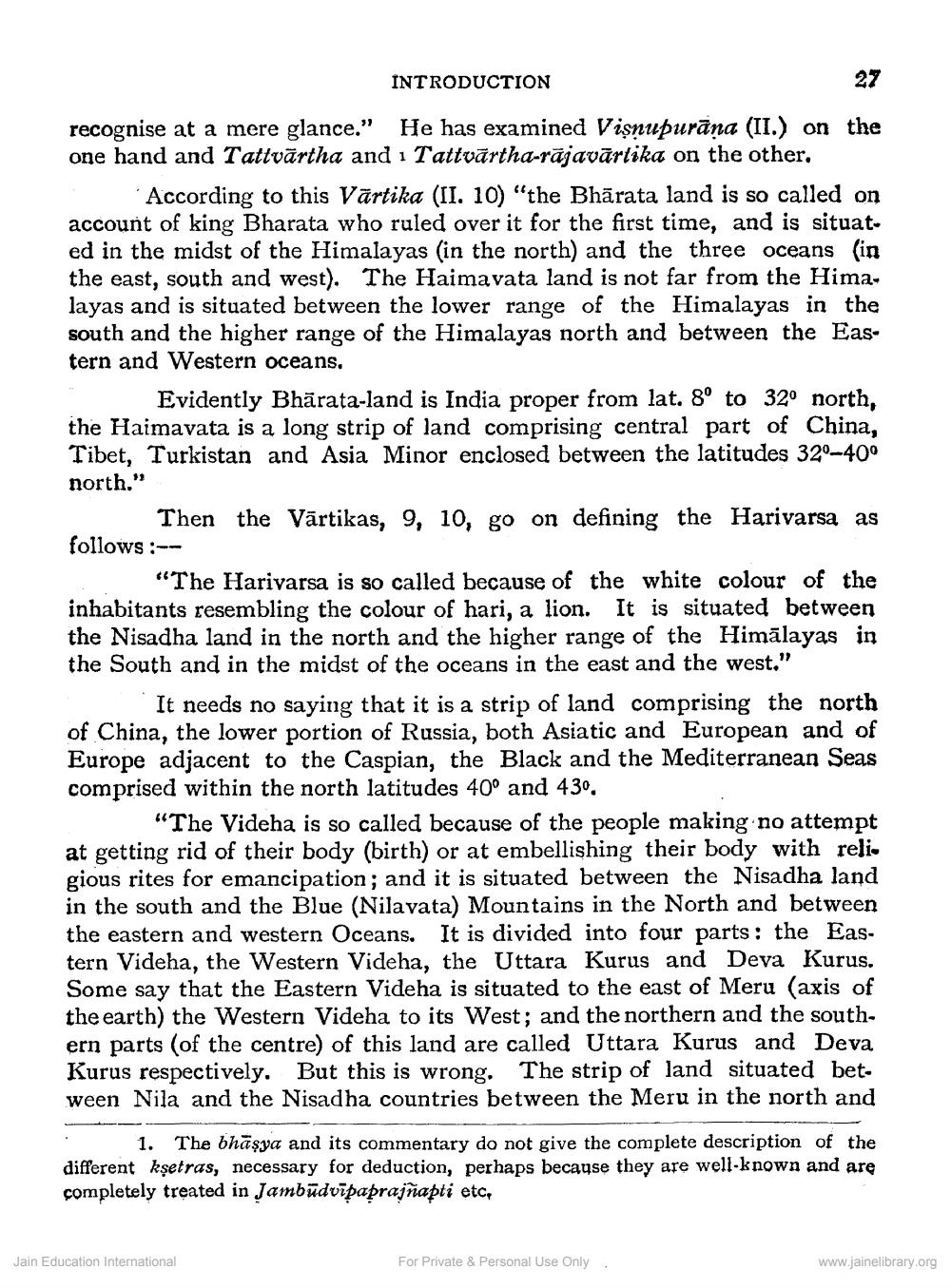________________
INTRODUCTION
27
recognise at a mere glance." He has examined Vişnupurāna (II.) on the one hand and Tattvārtha and 1 Tattvārtha-rājavārtika on the other.
According to this Vārtika (II. 10) "the Bhārata land is so called on account of king Bharata who ruled over it for the first time, and is situat. ed in the midst of the Himalayas (in the north) and the three oceans the east, south and west). The Haima vata land is not far from the Himalayas and is situated between the lower range of the Himalayas in the south and the higher range of the Himalayas north and between the Eas. tern and Western oceans,
Evidently Bhärata-land is India proper from lat. 8° to 32° north, the Haimavata is a long strip of land comprising central part of China, Tibet, Turkistan and Asia Minor enclosed between the latitudes 320-40° north."
Then the Vārtikas, 9, 10, go on defining the Harivarsa as follows:--
"The Harivarsa is so called because of the white colour of the inhabitants resembling the colour of hari, a lion. It is situated between the Nisadha land in the north and the higher range of the Himālayas in the South and in the midst of the oceans in the east and the west."
It needs no saying that it is a strip of land comprising the north of China, the lower portion of Russia, both Asiatic and European and of Europe adjacent to the Caspian, the Black and the Mediterranean Seas comprised within the north latitudes 40° and 430,
"The Videha is so called because of the people making no attempt at getting rid of their body (birth) or at embellishing their body with reli. gious rites for emancipation; and it is situated between the Nisadha land in the south and the Blue (Nilavata) Mountains in the North and between the eastern and western Oceans. It is divided into four parts: the Eas. tern Videha, the Western Videha, the Uttara Kurus and Deva Kurus. Some say that the Eastern Videha is situated to the east of Meru (axis of the earth) the Western Videha to its West; and the northern and the southern parts of the centre) of this land are called Uttara Kurus and Deva Kurus respectively. But this is wrong. The strip of land situated bet. ween Nila and the Nisad ha countries between the Meru in the north and
: 1. The bhāşya and its commentary do not give the complete description of the different kşetras, necessary for deduction, perhaps because they are well-known and are completely treated in Jambūdvīpaprajñapti etc,
Jain Education International
For Private & Personal Use Only
www.jainelibrary.org




